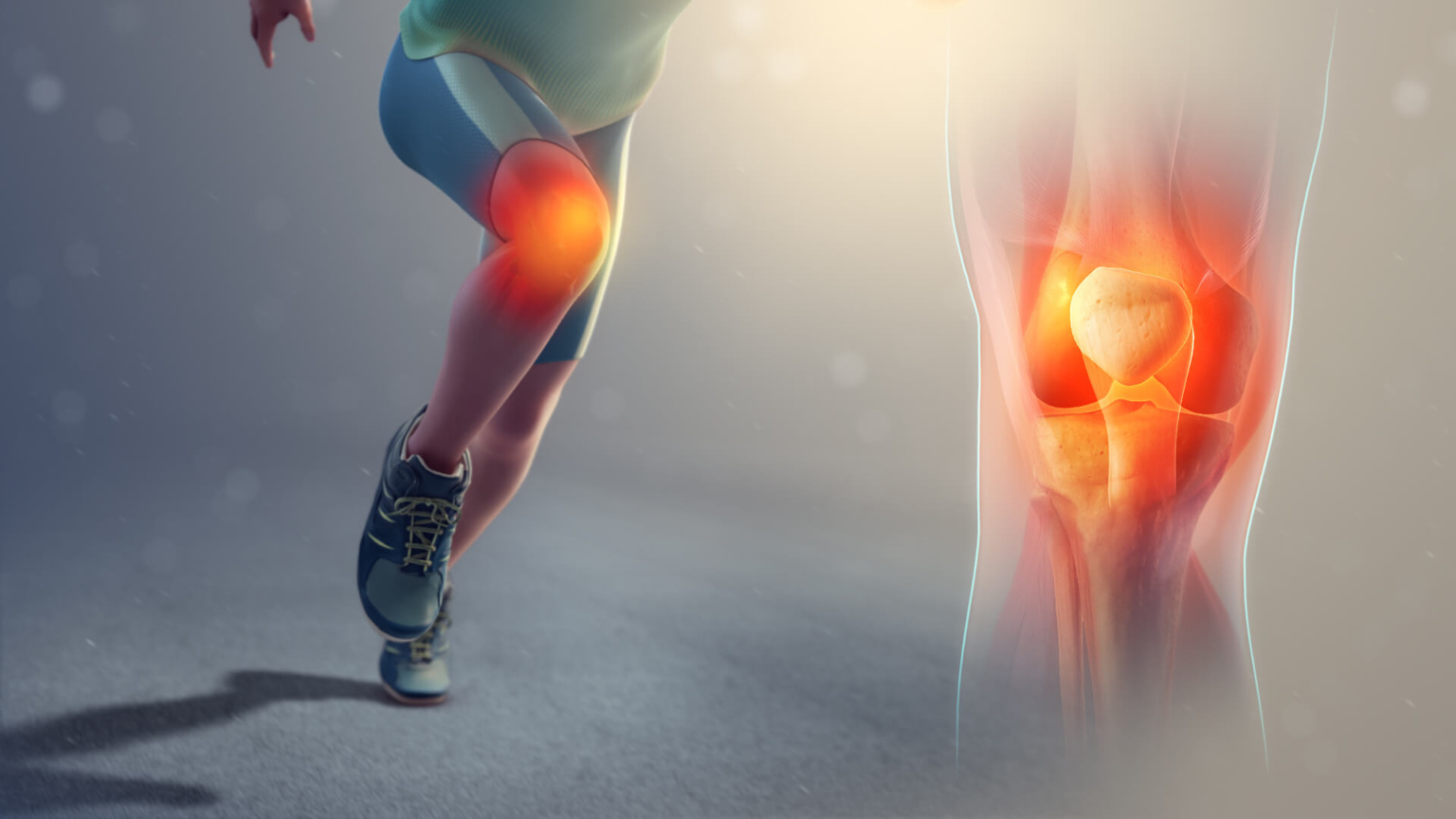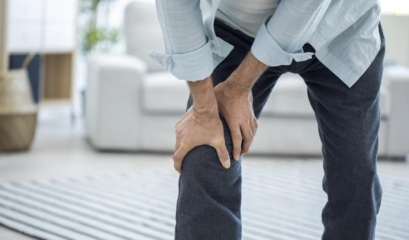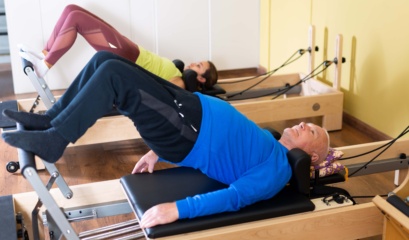Image from Scientific Animations, CC BY-SA 4.0, via Wikimedia Commons
In this blog, we explore 7 exercises for knee pain chosen by our team of physiotherapists to help you get back to your daily activities. Please remember that these are generic exercises, so it is important to consult your physiotherapist or GP prior to beginning any of them to avoid worsening your injury.
That being said, as physiotherapists, we see a lot of clients coming into the clinic with knee pain – in fact, around 46% of people over 50 experience knee pain, and around 30% of young adults also experience knee pain. That’s a lot! So know that you’re not alone.
Knee pain can be debilitating and affects people of all ages and can be caused by a variety of factors, such as prior injury, arthritis, or overuse. The good news is that there are exercises that can help alleviate knee pain and improve the strength and flexibility of the knee joint.
Whether you are recovering from an injury or managing chronic knee pain, these 7 exercises for knee pain chosen can help you regain your mobility and improve your overall quality of life.
7 Knee pain exercises
1. Lying knee bend
The lying knee bend is a great exercise for knee pain. To get the most out of it, do it lying down. In fact, your bed is a great place to perform this exercise (say no more)!
One repetition consists of bending and then straightening your knee, helping to improve mobility in your knee.
Here’s how it’s done:
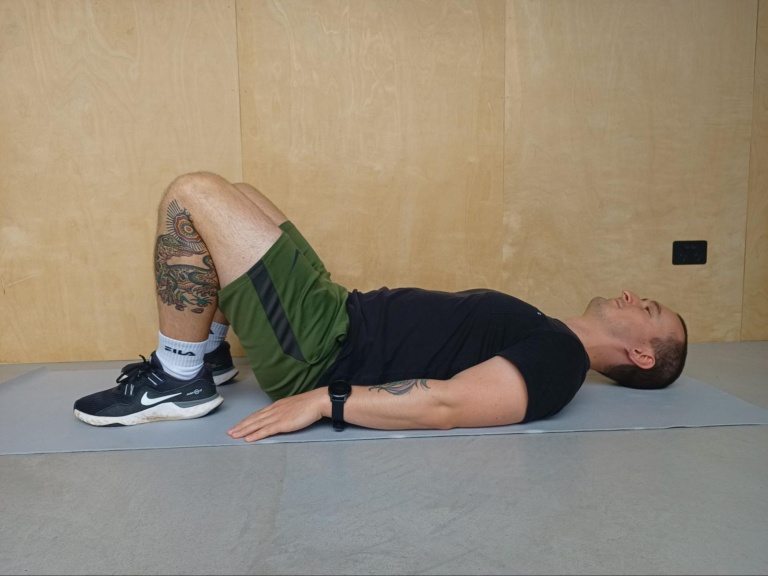
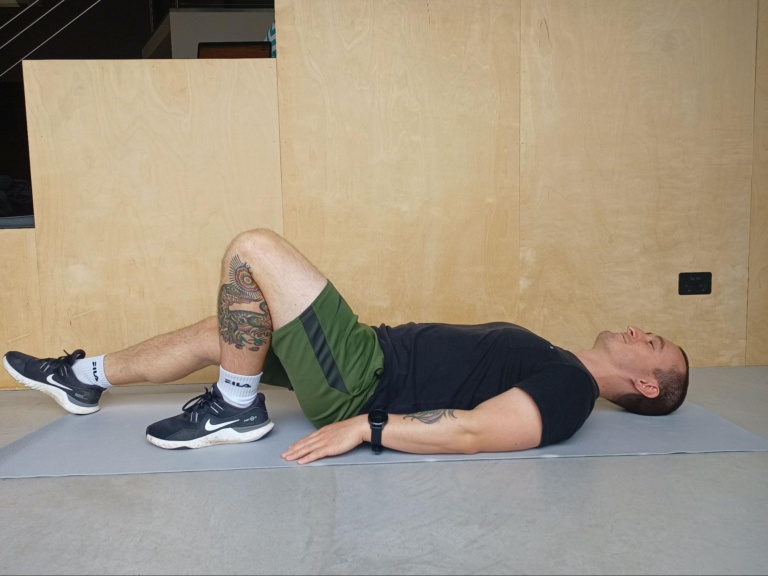
- Start with your injured knee straight and your uninjured knee bent (or both knees straight if they are both sore) gently pull the foot of your sore knee towards your glutes as far as comfortably possible.
- Keep this pose for two seconds before stretching out your leg again, and repeat 10-15 times.
2. Hamstring stretch
Tight hamstrings can make knee pain worse, so stretching them out is a great way to reduce pain. To get the most out of this stretch, place a mat or cushioning material beneath your back for added comfort.
How to stretch your hamstrings:
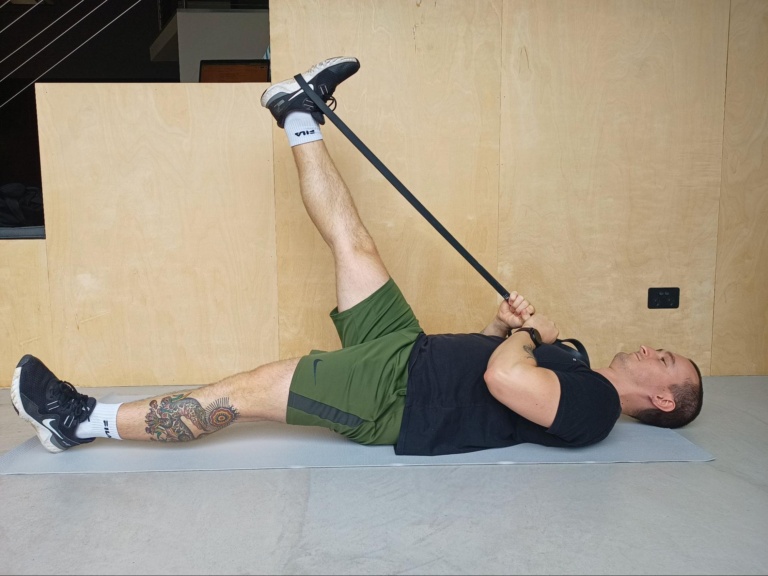
- Lie down on either the floor or a mat and extend both legs straight in front of you; if more comfortable, bend both knees with feet flat against the ground.
- Next, wrap a towel, belt, or band around the bottom of one foot.
- Straighten that leg and raise it into the air, pulling the wrap with your arms to help find a deep but comfortable stretch along the back of your leg. Do not push through pain, but try and lean into the stretch.
- Hold that position for 30 seconds before lowering and switching sides.
Aim to repeat each side 2-4 times as part of an effective workout routine!
3. Quadriceps stretch
The quads are a very powerful muscle but when they’re not stretched regularly they can become very tight and can worsen knee pain. Here’s how to stretch the quadriceps to reduce knee pain.
To stretch your quads you can:
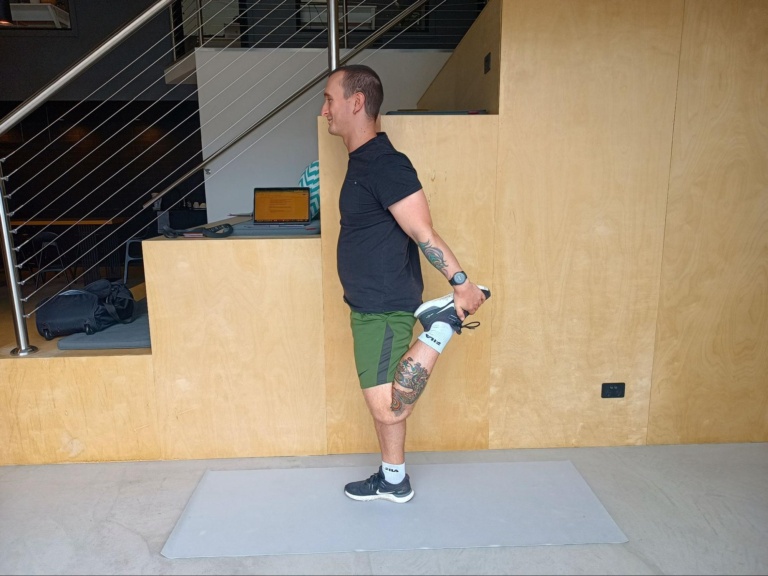
- Position yourself close to a wall or use a chair for stability.
- Ensure your feet are shoulder-width apart and bend one knee slowly, bringing your foot up towards your glutes.
- Afterwards, take hold of the ankle and delicately tug it in towards your glutes as far as comfortably possible.
- Maintain this pose for 30 seconds before returning to the original position and swapping legs.
Repeat these steps 2-4 times on each side for optimal results and a balanced quad stretch.
4. Seated knee extension
This exercise for knee pain helps to gently stretch your knee without adding too much weight or pressure onto the joint itself. To perform this exercise you will need two chairs.
Here’s how to do it:
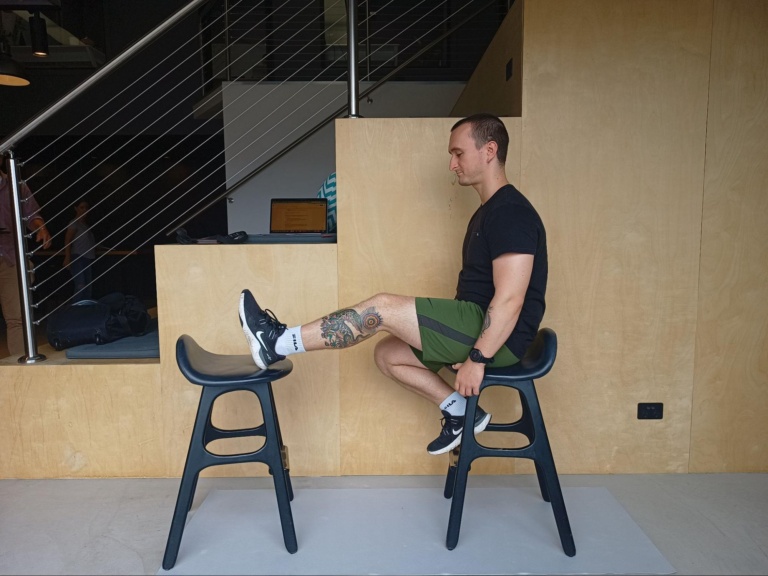

- Place two chairs opposite each other, facing one another.
- Sit in one chair and place one foot onto the chair opposite, with the injured knee bent.
- Gently straighten the leg as far as you can before it becomes too painful. Hold for 10 seconds and repeat 4-5 times, then swap legs.
Repeat these steps 2-4 times for each leg.
5. Straight leg raise
The straight leg raise is a simple and effective exercise to help relieve knee pain. When the muscles in the area of the knee become weak or tight, they can result in pain and discomfort. Straight leg raises help to strengthen these muscles and improve flexibility around the joint, resulting in an overall decrease in knee pain.
How to do a straight leg raise:
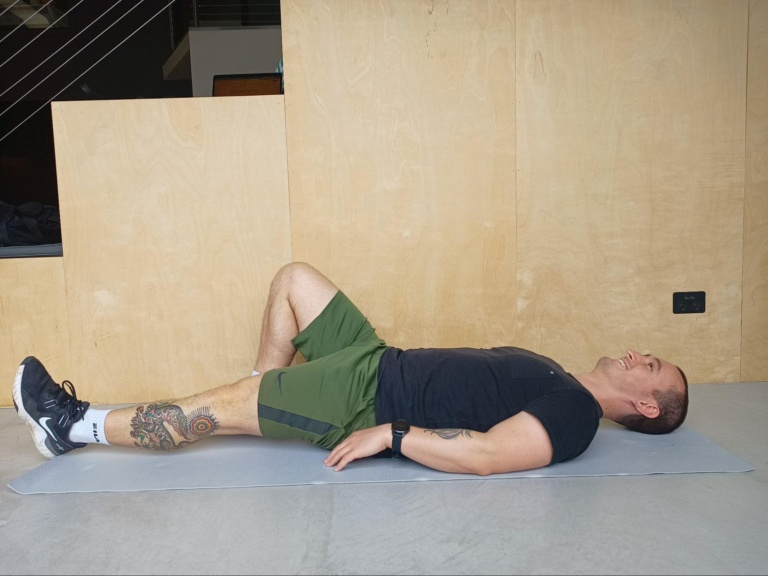
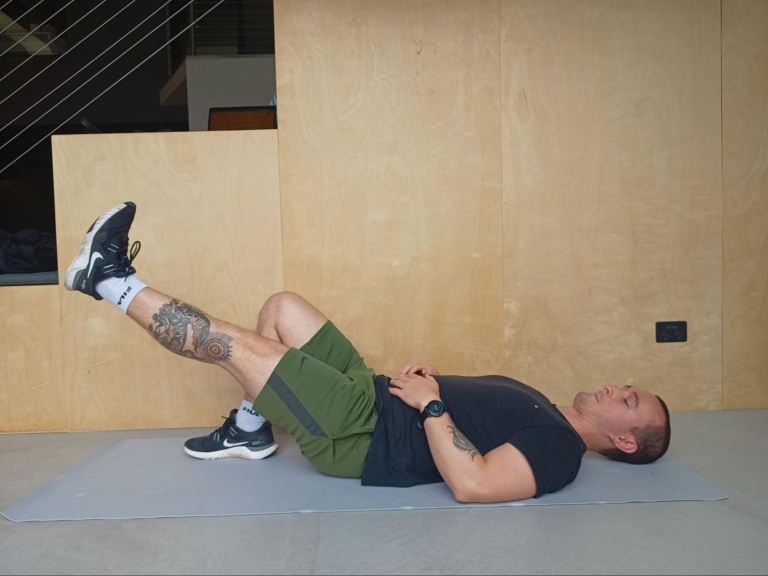
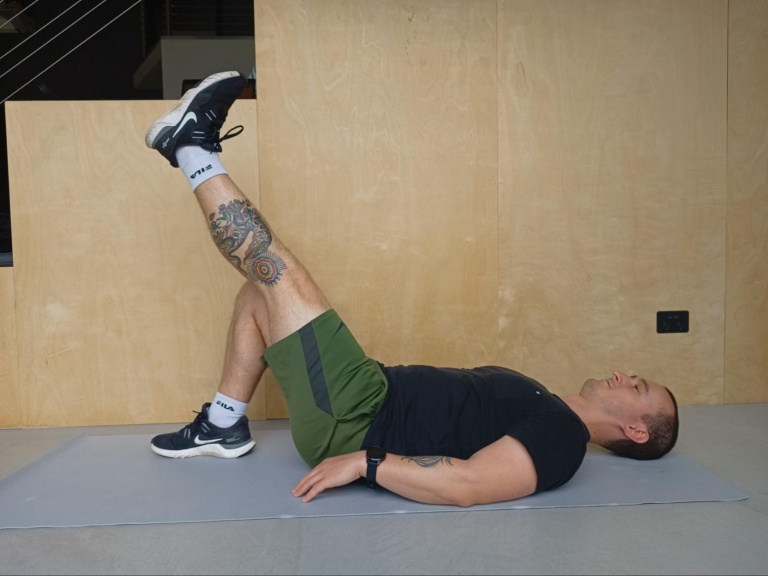
- Lie down on your back and keep both legs bent with your feet firmly on the floor and hip-width apart, and arms at your sides
- Gently straighten the injured leg flat on the ground then raise it while keeping the other foot on the floor. Try to raise it high enough that your thighs become parallel.
- Hold this position for 5-10 seconds before slowly returning the raised leg to the ground.
- Repeat for 10-15 reps then swap sides.
Aim for 2-4 sets of these!
6. Clamshells
The clamshell exercise is a great way to reduce knee pain by strengthening the hip muscles. This exercise improves the flexibility and stability of the hip muscles which may help to reduce discomfort in your knee.
To perform the clamshell exercise:
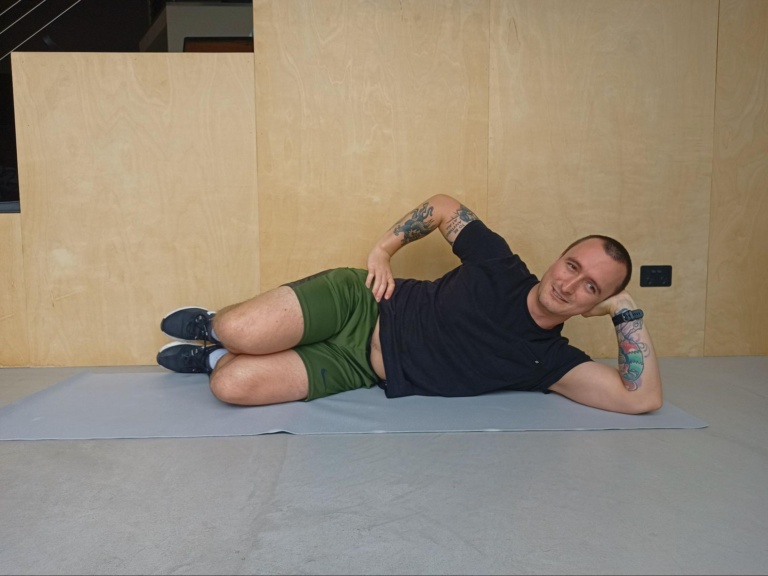
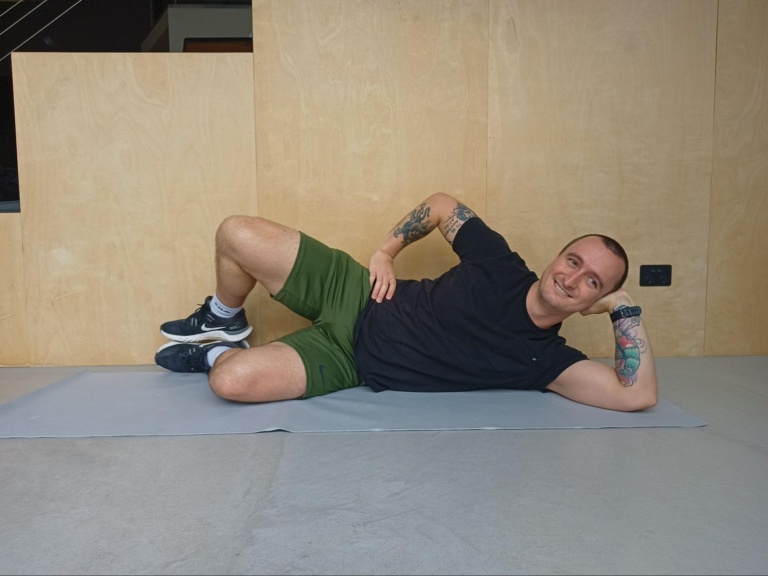
- Lie on your side with your knees bent at a 90-degree angle and your feet stacked on top of each other. Place one arm under your head for extra stability, the other arm can sit on the top of your hip or wherever feels comfortable.
- Slowly lift your top knee up towards the ceiling, keeping the feet together, until you feel the muscles contract. Hold this position for 5-10 seconds before slowly returning the knee to its starting point.
- Repeat this exercise 10-15 times for each leg.
As always aim to complete a full set of these 2-4 times per day for good results.
7. Mini squats
Mini squats can be a great way to help relieve knee pain. When the muscles around the knee are weak or tight, performing mini squats can help strengthen them, improve mobility and increase stability in the joint.
Here’s how to do them:
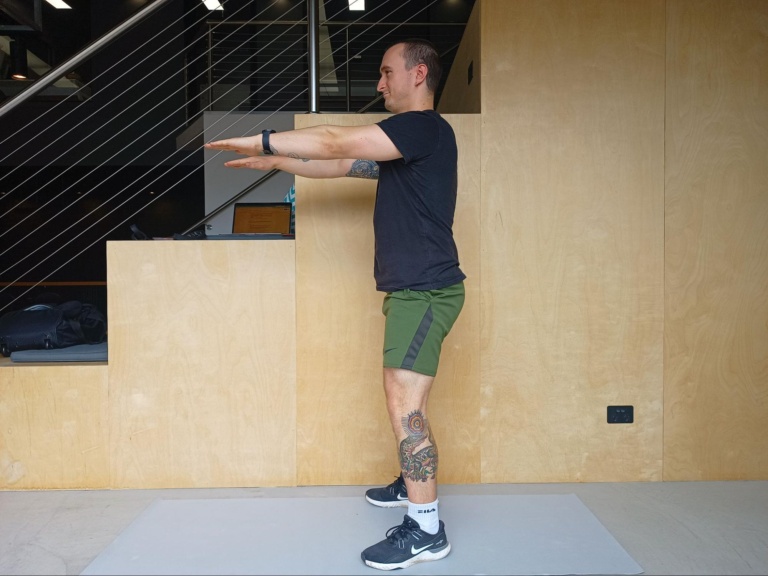
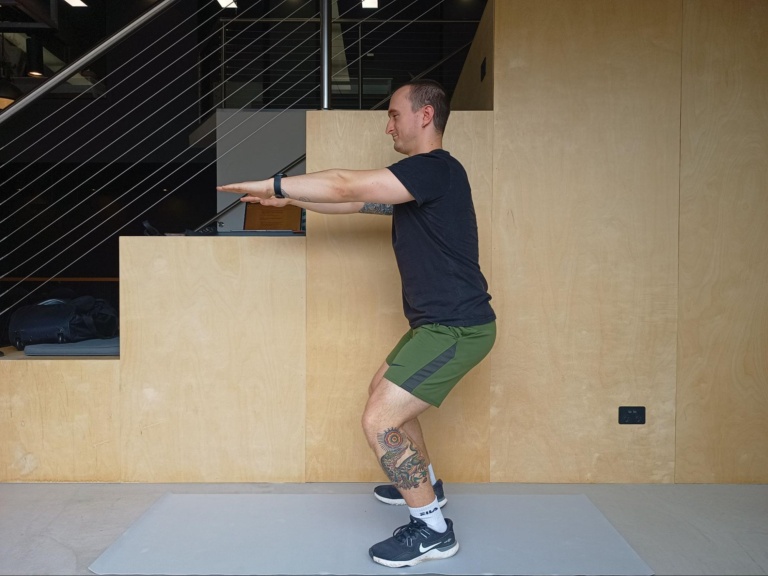
- Begin by standing with your feet hip-width apart, looking straight ahead, feet pointing forward.
- Keep your back straight, core tight, and chin up throughout the entire exercise.
- Lower yourself down as low as you can before the pain becomes too great, ensuring that your knees are not moving past 90 degrees.
- Push through your heels to lift yourself back up to the starting position.
Repeat 10-15 reps of this exercise 2-4 times a day, aiming to deepen your squat over time.
Want more physiotherapy exercises for knee pain?
If knee pain is holding you back from living your life to the fullest and you would like more physiotherapy exercises for knee pain, look no further than our experienced team of Sydney physios. We have countless years of experience in treating various forms of joint discomfort, so rest assured that we know how to get you back on track!
While painkillers, anti-inflammatories and braces may offer short-term relief from your knee discomfort, at Benchmark Physiotherapy, we know that they certainly won’t fix the underlying issue. That’s why it is essential that we identify the cause, to ensure it gets addressed properly. So if you’re in Sydney and want help with your knee pain, contact us today, or book an online appointment.


